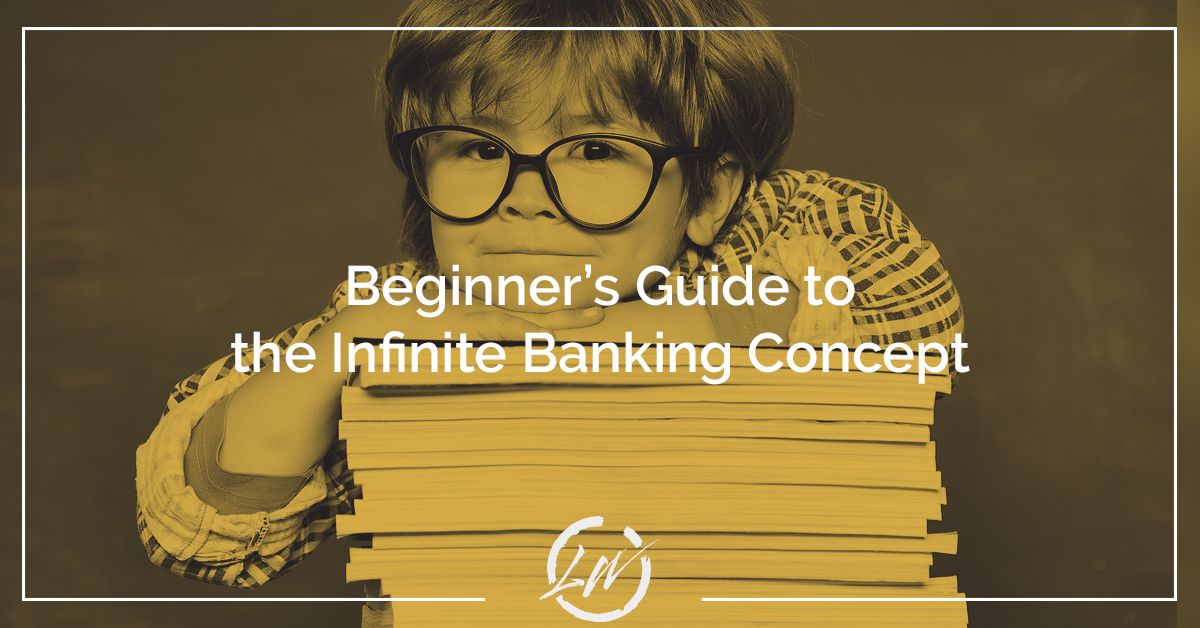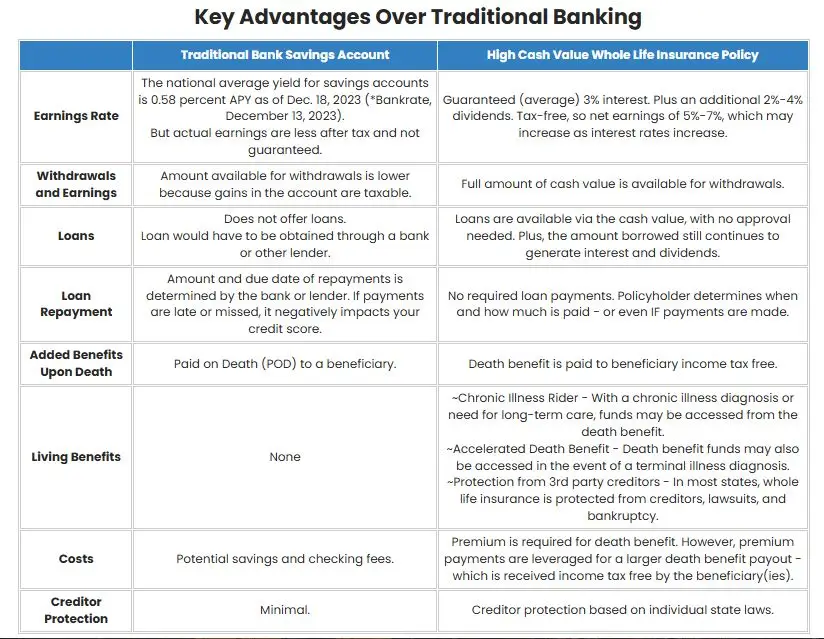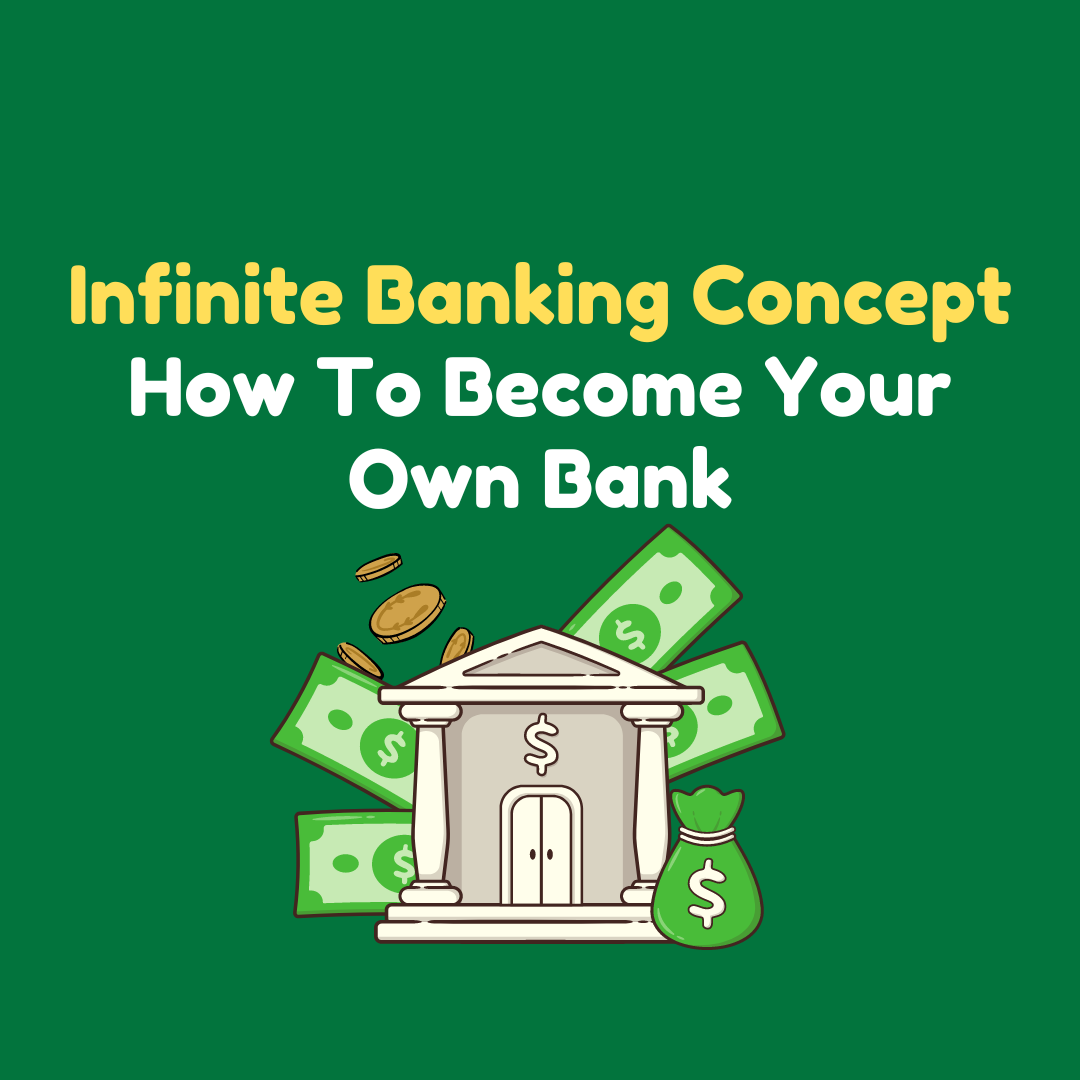All Categories
Featured
Table of Contents
The drawbacks of infinite banking are often ignored or otherwise pointed out in all (much of the details readily available about this idea is from insurance policy representatives, which might be a little prejudiced). Just the cash value is expanding at the reward rate. You also have to spend for the price of insurance policy, fees, and expenses.

Every irreversible life insurance coverage plan is various, but it's clear someone's overall return on every buck invested on an insurance coverage product can not be anywhere close to the returns price for the plan.
What Is Infinite Banking Concept
To offer an extremely standard and hypothetical instance, let's presume a person is able to earn 3%, on average, for every buck they spend on an "unlimited financial" insurance policy product (after all costs and fees). If we assume those bucks would certainly be subject to 50% in taxes total if not in the insurance product, the tax-adjusted price of return can be 4.5%.

We presume higher than typical returns overall life product and a really high tax obligation rate on dollars not take into the policy (which makes the insurance coverage product look better). The truth for several individuals may be worse. This pales in contrast to the long-lasting return of the S&P 500 of over 10%.
Infinite financial is a great product for representatives that sell insurance coverage, but might not be optimal when compared to the cheaper alternatives (without sales people earning fat compensations). Here's a breakdown of a few of the other supposed advantages of infinite banking and why they may not be all they're broken up to be.
Infinitebanking.org
At the end of the day you are getting an insurance policy product. We enjoy the defense that insurance policy uses, which can be obtained much less expensively from an inexpensive term life insurance policy policy. Unpaid lendings from the policy may additionally decrease your survivor benefit, decreasing an additional degree of protection in the plan.
The concept just works when you not just pay the considerable costs, however make use of extra cash money to acquire paid-up additions. The possibility expense of all of those bucks is incredible very so when you could rather be purchasing a Roth Individual Retirement Account, HSA, or 401(k). Even when contrasted to a taxed financial investment account and even an interest-bearing account, limitless banking might not offer comparable returns (contrasted to spending) and similar liquidity, accessibility, and low/no cost structure (contrasted to a high-yield cost savings account).
With the rise of TikTok as an information-sharing system, economic suggestions and strategies have actually found an unique way of dispersing. One such approach that has been making the rounds is the boundless financial concept, or IBC for short, gathering recommendations from celebrities like rapper Waka Flocka Flame. While the method is presently popular, its roots trace back to the 1980s when economist Nelson Nash introduced it to the world.

Within these plans, the money value expands based on a rate set by the insurance provider. When a substantial cash money value accumulates, insurance holders can get a cash money worth financing. These fundings differ from traditional ones, with life insurance policy functioning as collateral, indicating one might shed their coverage if borrowing excessively without appropriate cash value to sustain the insurance policy costs.
How To Become Your Own Bank
And while the allure of these policies appears, there are inherent constraints and risks, necessitating persistent money worth tracking. The method's authenticity isn't black and white. For high-net-worth people or company owner, particularly those making use of techniques like company-owned life insurance policy (COLI), the advantages of tax obligation breaks and substance development could be appealing.
The attraction of boundless banking does not negate its obstacles: Expense: The foundational demand, a permanent life insurance coverage plan, is costlier than its term counterparts. Qualification: Not everybody gets whole life insurance policy as a result of strenuous underwriting processes that can omit those with details health or way of life conditions. Intricacy and threat: The detailed nature of IBC, combined with its risks, might deter many, especially when less complex and much less high-risk alternatives are available.

Alloting around 10% of your regular monthly revenue to the plan is simply not possible for the majority of people. Using life insurance policy as a financial investment and liquidity resource requires self-control and monitoring of policy cash money worth. Consult a monetary consultant to establish if infinite financial straightens with your top priorities. Part of what you check out below is merely a reiteration of what has already been said over.
So before you get on your own right into a scenario you're not prepared for, know the following initially: Although the concept is typically sold because of this, you're not really taking a finance from on your own - bank on yourself ripoff. If that were the situation, you would not need to repay it. Instead, you're borrowing from the insurer and need to settle it with rate of interest
Infinite Banking Life Insurance
Some social media messages recommend making use of cash money value from entire life insurance policy to pay down credit card debt. When you pay back the lending, a part of that interest goes to the insurance coverage company.
For the first a number of years, you'll be paying off the commission. This makes it exceptionally tough for your plan to accumulate worth during this time. Unless you can manage to pay a few to numerous hundred dollars for the following decade or more, IBC will not function for you.
If you require life insurance policy, below are some beneficial tips to consider: Consider term life insurance coverage. Make certain to shop about for the ideal rate.

Boundless financial is not a product and services provided by a particular establishment. Limitless financial is a technique in which you acquire a life insurance policy policy that collects interest-earning cash worth and take out finances versus it, "borrowing from yourself" as a source of resources. Then ultimately repay the financing and start the cycle throughout once again.
Pay plan costs, a portion of which builds cash worth. Take a finance out versus the plan's money worth, tax-free. If you utilize this idea as meant, you're taking cash out of your life insurance coverage plan to purchase everything you would certainly require for the rest of your life.
Latest Posts
Infinite Banking Strategy: Build Your Personal Bank
How Infinite Banking Works
How To Become Your Own Bank